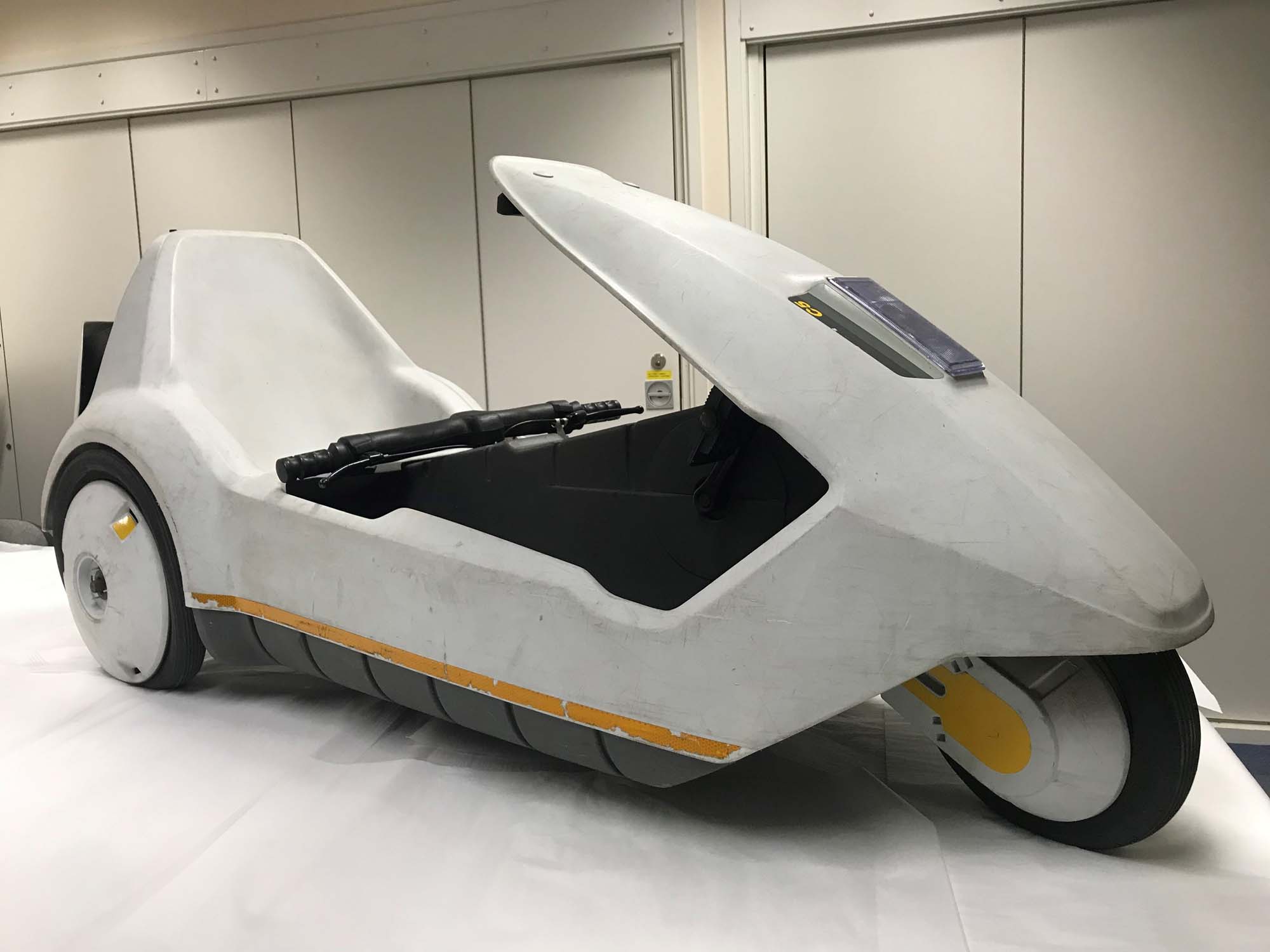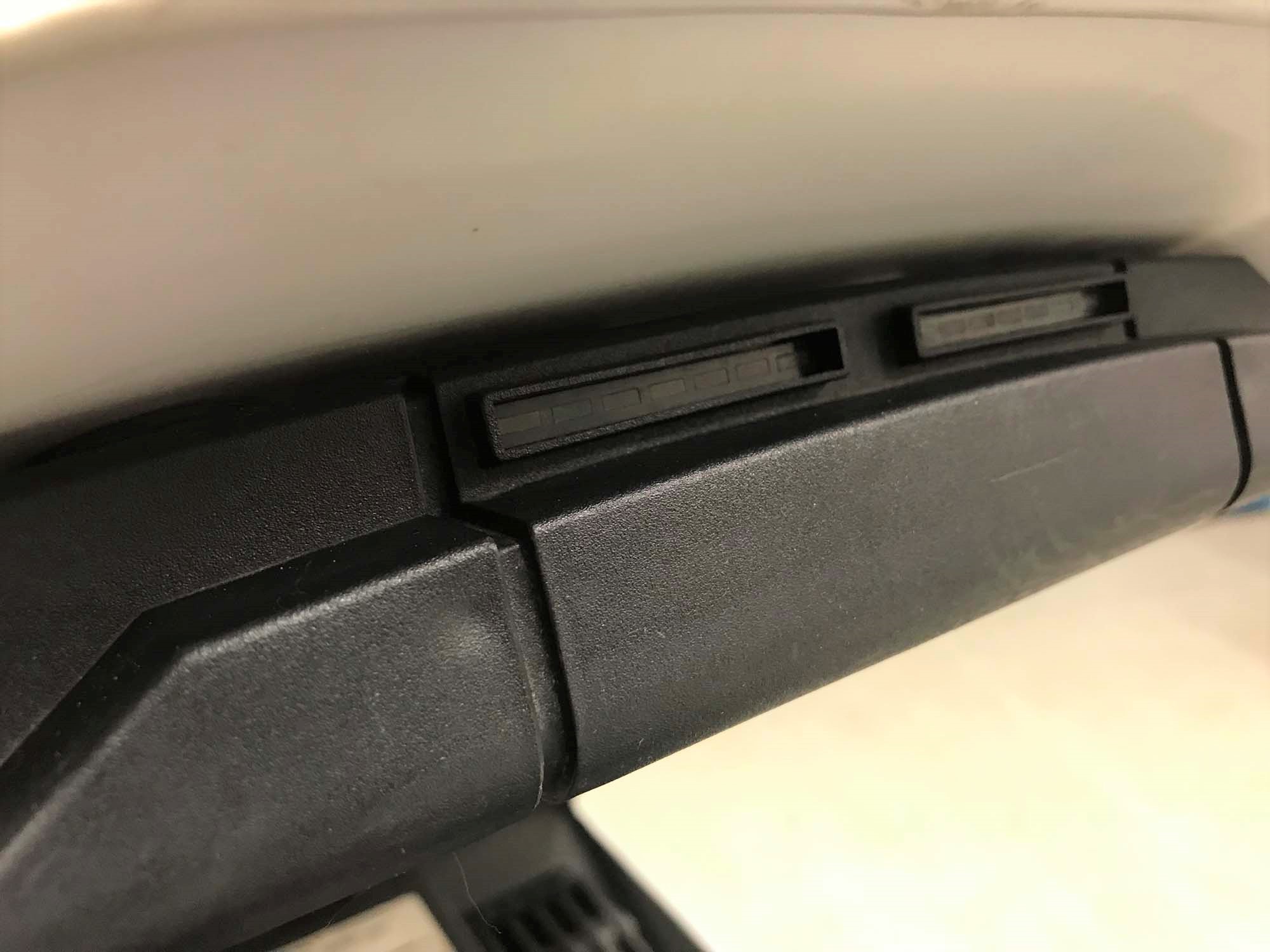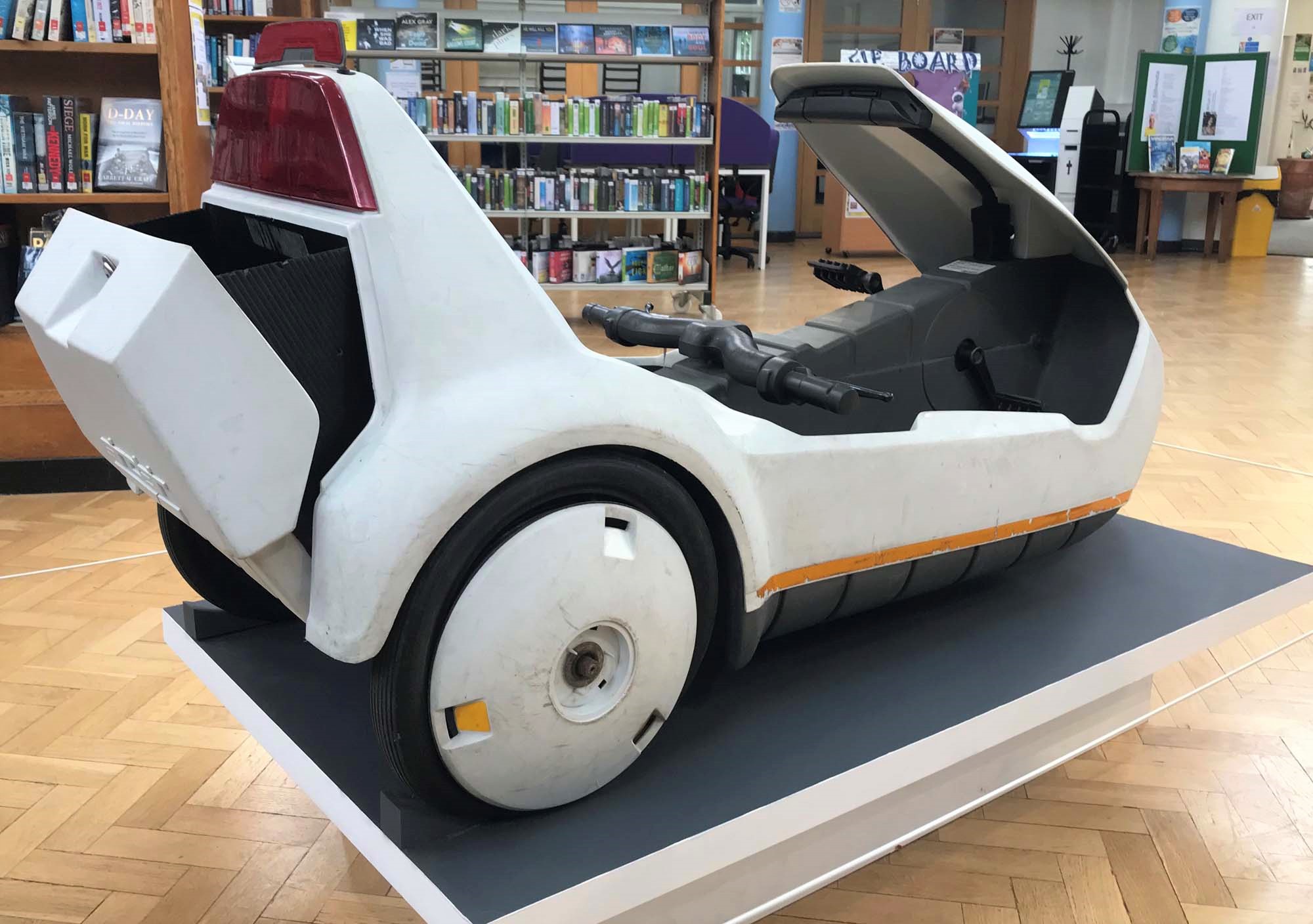Collections Spotlight: The Sinclair C5
Highlighting a futuristic electric tricycle invented in the 1980s, from the Museum's technology collections.
Published: 18 July 2024

The Sinclair C5 is a small one-person electric vehicle invented by Sir Clive Sinclair in 1985. Measuring approximately 174cm in length and weighing approximately 45kg without the battery, the compact C5 was designed to manoeuvre easily in urban environments, be practical to store, and convenient for commuter use.
Intended for a single occupant to sit in a semi-reclined position, the Sinclair C5 features a distinctive, futuristic appearance. Manufactured in the UK by Hoover, the vehicle’s plastic body is constructed from a single moulded polypropylene shell. This aerodynamic and lightweight frame sits upon a steel chassis, developed by the British car manufacturer Lotus, adding strength and stability to the structure.
As a power-assisted tricycle, the C5 has a single wheel at the front for steering and two wheels at the rear. A 12-volt battery is connected to a 250-watt electric motor which drives the rear wheels, providing a top speed of 15 miles per hour and a range of 20 miles on a single charge. Two LED bar graph displays on the ‘pod’ situated directly ahead of the user, allow the motor and battery charge levels to be monitored.

The pod features two LED bar graph displays
Integrated pedals allow the user to supplement the motor power manually, and a handlebar required for steering is positioned beneath the user’s legs. The handlebar features a switch to engage the motor as well as cable actuated brakes, similar to those found on a bicycle.

The seat, handlebar, and foot well
Although there are no brake lights, a headlight and rear light are built into the vehicle as standard, along with a small lockable boot for storage. Indicator lights were available as an optional extra, along with other features including wing-mirrors, a horn, and a reflective mast to increase visibility.

The Sinclair C5 displayed at a recent community event
The Sinclair C5 was designed to be an affordable, eco-friendly personal transport solution for short urban commutes, providing a green, innovative alternative to cars. Taking advantage of legislation at the time, these vehicles could be driven by anyone aged 14 and above with no requirement for road tax, a licence, or insurance. Approximately 14,000 were made but only around 5,000 were sold. It’s limited range and speed, vulnerability to weather conditions, and safety concerns on busy roads, ultimately contributed to its commercial failure.
View the Sinclair C5 on display at the next Doorstep Museums event, bringing special objects from the museum collections to your doorstep, at Hamilton Library on Friday 2nd August.
